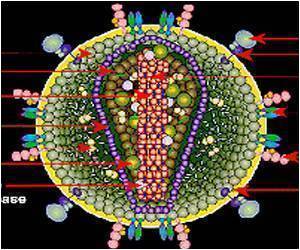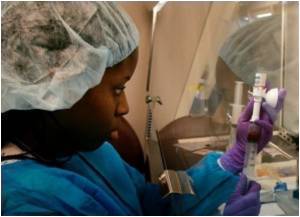Tracing cancer back to the dawn of multicellularity could explain its mysterious properties and transform therapy
A new way to look at cancer -- by tracing its deep evolutionary roots to the dawn of multicellularity more than a billion years ago -- has been proposed by Paul Davies of Arizona State University's Beyond Center for Fundamental Concepts in Science in collaboration with Charles Lineweaver of the Australian National University. If their theory is correct, it promises to transform the approach to cancer therapy, and to link the origin of cancer to the origin of life and the developmental processes of embryos.Davies and Lineweaver are both theoretical physicists and cosmologists with experience in the field of astrobiology -- the search for life beyond Earth. They turned to cancer research only recently, in part because of the creation at Arizona State University of the Center for the Convergence of Physical Science and Cancer Biology. The Center is one of twelve established by the National Cancer Institute to encourage physical scientists to lend their insights into tackling cancer.
The new theory challenges the orthodox view that cancer develops anew in each host by a series of chance mutational accidents. Davies and Lineweaver claim that cancer is actually an organized and systematic response to some sort of stress or physical challenge. It might be triggered by a random accident, they say, but thereafter it more or less predictably unfolds.
Their view of cancer is outlined in the article "Exposing cancer's deep evolutionary roots," written by Davies. It appears in a special July issue ofPhysics World devoted to the physics of cancer.
"We envisage cancer as the execution of an ancient program pre-loaded into the genomes of all cells," says Davies, an Arizona State University Regents Professor. "It is rather like Windows defaulting to 'safe mode' after suffering an insult of some sort." As such, he describes cancer as a throwback to an ancestral phenotype.
The new theory predicts that as cancer progresses through more and more malignant stages, it will express genes that are more deeply conserved among multicellular organisms, and so are in some sense more ancient. Davies and Lineweaver are currently testing this prediction by comparing gene expression data from cancer biopsies with phylogenetic trees going back 1.6 billion years, with the help of Luis Cisneros, a postdoctoral researcher with Arizona State University's Beyond Center.
But if this is the case, then why hasn't evolution eliminated the ancient cancer subroutine?
"Because it fulfills absolutely crucial functions during the early stages of embryo development," Davies explains. "Genes that are active in the embryo and normally dormant thereafter are found to be switched back on in cancer. These same genes are the 'ancient' ones, deep in the tree of multicellular life."
The link with embryo development has been known to cancer biologists for a long time, says Davies, but the significance of this fact is rarely appreciated. If the new theory is correct, researchers should find that the more malignant stages of cancer will re-express genes from the earliest stages of embryogenesis. Davies adds that there is already some evidence for this in several experimental studies, including recent research at Harvard University and the Albert Einstein College of Medicine in New York.
"As cancer progresses through its various stages within a single organism, it should be like running the evolutionary and developmental arrows of time backward at high speed," says Davies.
This could provide clues to future treatments. For example, when life took the momentous step from single cells to multicellular assemblages, Earth had low levels of oxygen. Sure enough, cancer reverts to an ancient form of metabolism called fermentation, which can supply energy with little need for oxygen, although it requires lots of sugar.
Davies and Lineweaver predict that if cancer cells are saturated with oxygen but deprived of sugar, they will become more stressed than healthy cells, slowing them down or even killing them. ASU's Center for the Convergence of Physical Science and Cancer Biology, of which Davies is principal investigator, is planning a workshop in November to examine the clinical evidence for this.
"It is clear that some radically new thinking is needed," Davies states. "Like aging, cancer seems to be a deeply embedded part of the life process. Also like aging, cancer generally cannot be cured but its effects can certainly be mitigated, for example, by delaying onset and extending periods of dormancy. But we will learn to do this effectively only when we better understand cancer, including its place in the great sweep of evolutionary history."
Source:Arizona State University














